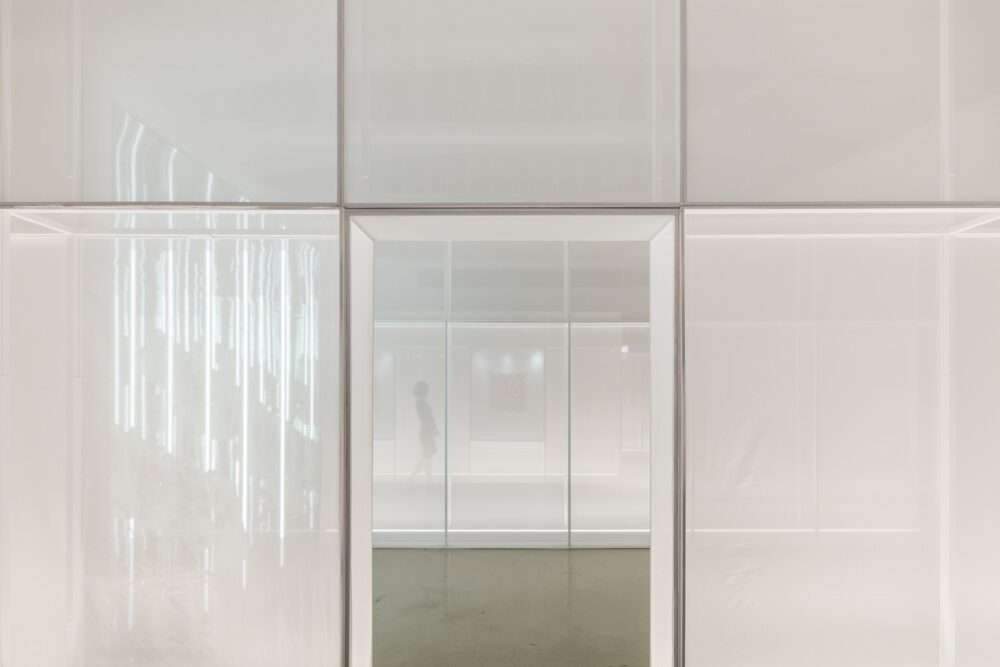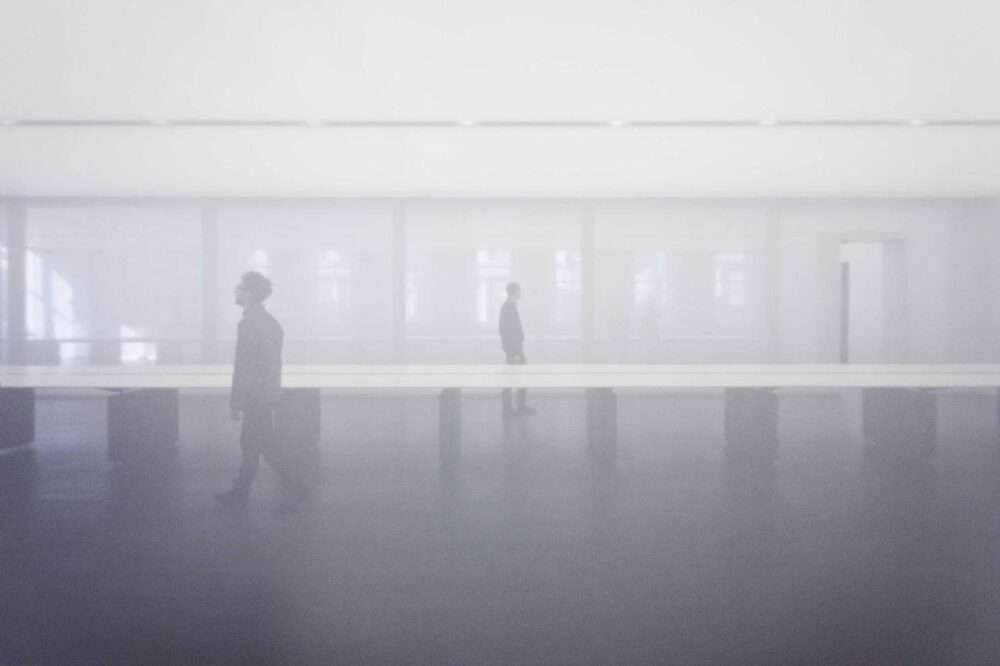Create quiet spaces with white ambiance canvas sections,
At the height of High Modernism, architects such as Le Corbusier and Mies van der Rohe extolled the aesthetic value of whiteness, which they saw as denoting purity and simplicity.
For example, Mies van der Rohe’s Farnsworth House paired the abstract whiteness of its skeletal structure with floor-to-ceiling windows,
using enveloping natural light to further elevate the already heavenly aspirations of the space.
Today, some contemporary architects and designers have developed the sublime aesthetic of white high-modern architecture.
Using transparent fabric sections, the purity of white complements the walls with an ethereal play of light and shadow.

Create quiet spaces with white ambiance canvas sections
Below we will discuss different design strategies for working with white fabrics in this way,
And we include two examples of projects that have used sheer fabrics in soothing, yet creative ways.
While designers can use any number of different colors to create different moods,
We’ll focus on cultivating a white, monochromatic aesthetic using white ceilings and walls,
white fabric cutouts, and white furniture.
To create their specific ideal effect, designers can experiment with the type of fabric, especially its transparency and texture.
Because partitions of this type are not structural, they can be made of almost any relatively durable fabric.
Including cotton, polyester, nylon, chiffon, organza, sapphire or net.

Depending on the species, sections may filter in more or less light and slightly varying textures of shades.
Robia, for example, is usually more opaque than organza or chiffon,
each of which is also made from a different weave pattern.
Similarly, different types of webs or webs may appear coarser than fine fabrics as the gaps and threads are less noticeable.
Architects must make these choices by gauging which selection will best complement other materials and lighting conditions.
These complementary materials will typically follow the subdued or monochromatic aesthetic of white fabrics:
Architects can use steel, light wood, or painted structural materials along with translucent fabrics to achieve the same ethereal effects.

Again, these materials must be selected based on their consistency with the textures and lighting conditions.
But most importantly, it must be functional and structurally sound,
especially the materials of columns, rails and other structural elements.

Logan Offices/SO-IL
In this 2012 design by SO-IL, seamless floor-to-ceiling fabric partitions separate,
Central work areas to maintain the essence of the shared environment despite the visual fragmentation.
The transparency of the texture also acts as a kind of blurring filter, reducing people and objects to surreal, dreamlike silhouettes.
The flat, deflating effect on depth and space echoes the elegance of the original whitewashed modernist designs.

Versatile hanbok creates space architecture/farming
This design for a South Korean fashion show uses the simplicity
and etherealness of a white textile section as a beautiful yet unpretentious backdrop to showcase contemporary fashion designs.
The design of the exhibition gives this aesthetic effect an additional cultural meaning,
as it models the interior space after Korean Hanbok,
It is a type of traditional clothing that is usually worn during festivals and celebrations.
For more architectural news


 العربية
العربية